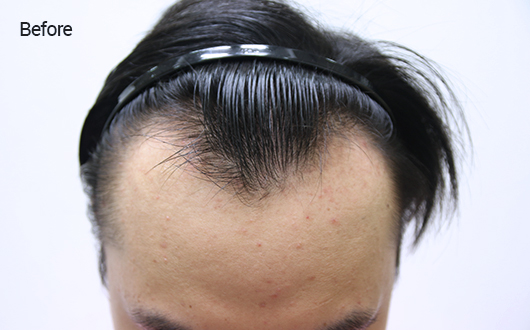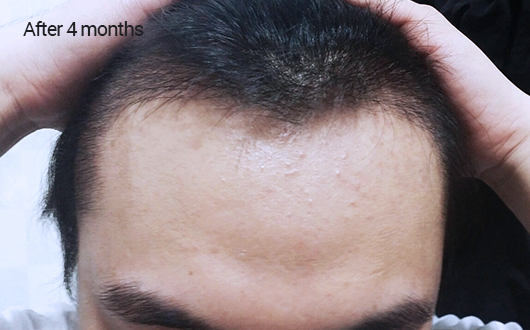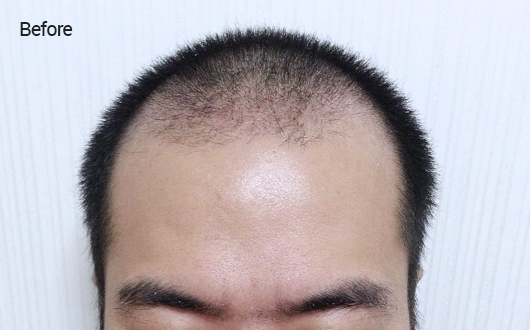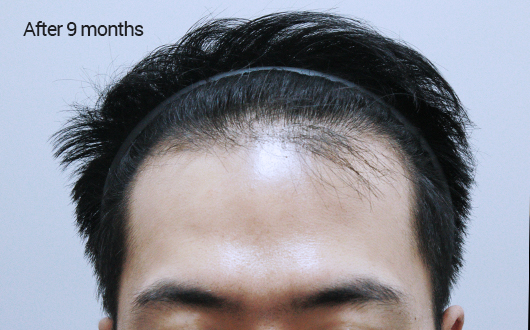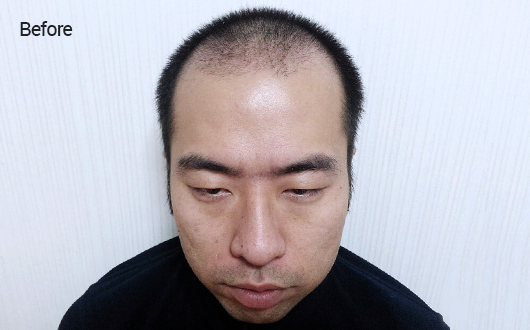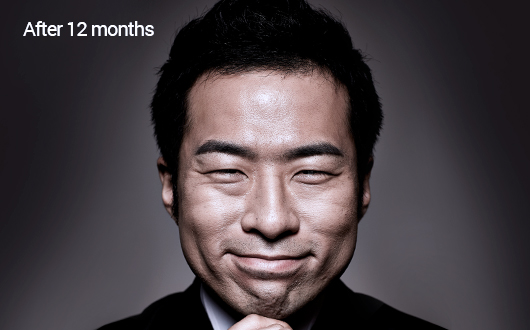Most frequently asked Q&A
by actual patients
Do not ask around. FORHAIR will provide you
with the most accurate and truthful information.
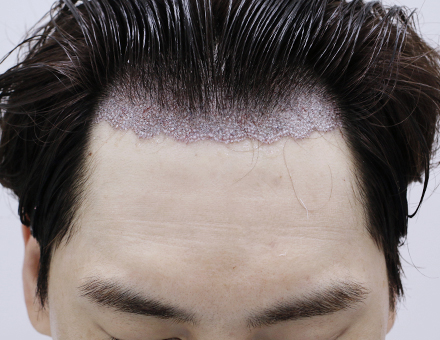
- The 3 days following surgery is the most important
engraftment period. - Since engraftment generally occurs during 1~2 weeks
after the surgery, precautions need to be taken to prevent
irritation to the area of implantation. - Apply the tonic you purchased to the hair at one-hour intervals after the surgery (until the whole bottle is finished)
- It is advisable to take rest at home on the day of surgery.
- You can return home immediately after the surgery by wearing a beanie hat that we provide. However, there could be temporary dizziness due to use of partial anesthesia. As such, we recommend that you use public transportation rather than driving yourself.
-
Bleeding in occipital section and posture during sleeping
-
Why is there bleeding at the back of my head.
Blood that was stagnant at the back of the head where hair follicles were collected may leak out.
Do not be alarmed even if blood leaks onto the bandage we put on the head, along with sufficient
hemostasis prior to discharge from hospital. -
Which posture should I assume when I sleep?
It is advisable to sleep on your back with eyes pointed to the ceiling to achieve continued hemostasis in the occipital region. As blood could stain the pillow somewhat, it is also advisable to place a towel under the head.
Place the neck pillow, which we provide to ensure that the recipient area on the forehead does not come in contact with the pillow, on top of your pillow when you sleep. (You are advised to use the neck pillow for about 2 weeks after the surgery.)
-
Why is there bleeding at the back of my head.
- Drug administration method and pain after such administration
- The entire area of implantation displays a dark red color with scabs formed on the recipient area.
- Sensory perception in the occipital region from which hair follicles were collected could have become somewhat dulled.
- Area of implantation may experience prickling and throbbing pain.
- Although the forehead area that was not subjected to surgery may become less sensitive temporarily, it will recover shortly.
- Receive shampoo by visiting hospital the next day or wash hair via self-shampooing method we instruct.
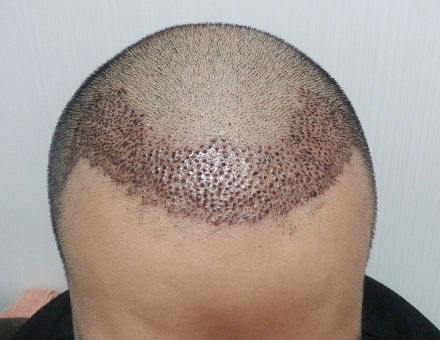
-
If I cannot visit the hospital on the day after the surgery, what is the self-shampooing instruction?
-
When removing gauze
- ①Remove the bandage on the surface.
- ②The gauze situated under the bandage, which has now been removed, should also be removed one sheet at a time by placing it under flowing water with the head tilted backward. At this time, use lukewarm water with low water pressure to ensure that implanted hair does not become detached along with the gauze. Allow the last sheet of gauze to be detached on its own by flowing water onto it naturally.
-
After having removed the gauze
- ①Start shampooing with the head tilted backward.
If you tilt your head forward, implanted hair may fall off due to the pressure generated under the scalp. - ②Rinse sufficiently using lukewarm water with low water pressure.
- ③Never touch the implanted area by hand.
- ④Although the occipital area may give off a slight smell, rub gently by hand to remove ointment.
- ①Start shampooing with the head tilted backward.
-
After sufficient rinsing
- ①Apply foam shampoo to the implanted area sufficiently.
- ②Leave foam on the hair for a while and shampoo the back of the head.
- ③Shampoo the back of the head as though massaging in gentle circles.
(There may be slight pain at the time of first shampooing. If the occipital area is not cleaned thoroughly,
inflammation may occur or regeneration speed may slow down.) - ④Once shampooing of the occipital region is completed, rinse the foam from the implanted
area using lukewarm water with low water pressure.
-
When removing gauze
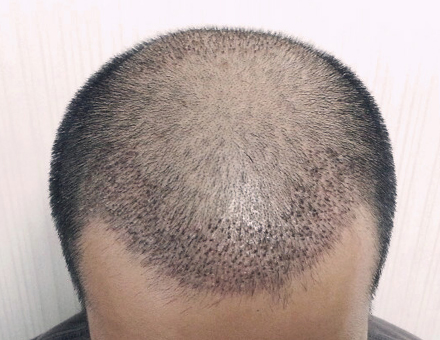
following surgery Current status
- Scabs on the recipient area will become hardened and darker.
- Although the recipient area may be itchy,
make sure not to scratch It. - Do not rub the recipient area by hand or with a towel.
- Rinse the recipient area using lukewarm water
with low water pressure. - When drying hair, use natural wind or cold wind from a hair dryer.
-
Itchiness & rubbing the recipient area
-
Should it feel so itchy?
It is a highly natural phenomenon as a process of restoration of skin tissue.
For the sake of successful success rate, take precaution against scratching even if it is itchy. -
Is it alright even if I bump my head in the implanted area?
Unless the hair follicles fall off and there is bleeding, there will not be a major problem.
Placing a cold pack on the area is helpful if there is slight swelling or pain.
If you are still concerned, please visit the hospital to receive a recovery progress examination.
-
Should it feel so itchy?
following surgery Current status
- Scabs fall off and the recipient area becomes reddened.
- You can shampoo the hair by rubbing the recipient area by hand after 2 weeks. However, make sure to rub gently with the tip of the fingers rather than with the fingernails.
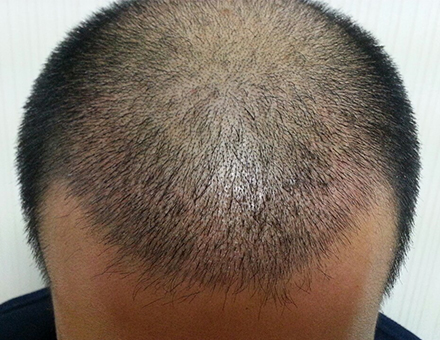
-
Falling off of implanted hair with scabs and reddening of the scalp
-
Some of my hair fell off with the scabs. Is it alright?
Implanted hair starts to fall off as quickly as 2 weeks ~ 1 month following surgery, depending on the individual.
At this time, hair attached to scabs can fall off. Although the implanted hair falls off,
hair follicles are securely engrafted within the scalp, so you need not worry. -
The implanted area appears empty.
Implanted hair can fall off or, depending on the situation, may not fall.
As such, although the area may look somewhat empty from outside, hair follicles have been implanted densely
within the scalp and will generate sufficient hair strands shortly. -
When will all the scabs and redness disappear?
Scabs will fall of within 2~3 weeks. Although there are individual differences,
redness will disappear as quickly as 1~2 months following surgery, and usually within 5~6 months.
-
Some of my hair fell off with the scabs. Is it alright?
- Precautions when visiting hair salons and exercising after the surgery
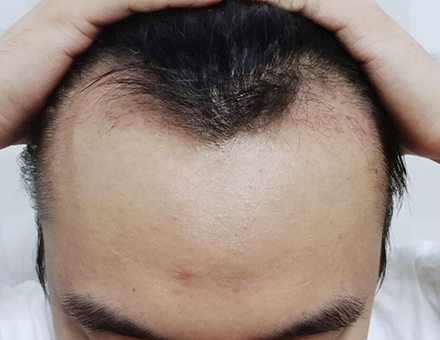
following surgery Current status
- Hair in the recipient area will start to grow again approximately 3 months after the surgery.
- Although folliculitis may occur, such as acne, please visit our hospital if severe.
-
What if my implanted or original hair starts to fall off?
-
My transplanted hair started to fall off. Is it alright?
Transplanted hair will start to fall off approximately 1 month after the surgery, even if the hair is pulled slightly.
It is a natural phenomenon of hair having entered the resting phase along with the transplant.
You need not be concerned since the safely engrafted hair follicles within the scalp are growing normally. -
Original hair rather than implanted hair is falling off.
There occasionally may be situations in which original hair falls off, since the scalp has been irritated
due to the surgery. However, since such accompanied falling off of hair is a temporary phenomenon and will recover shortly,
you need not be concerned about it.
-
My transplanted hair started to fall off. Is it alright?
- Folliculitis.
- This is a phase in which new hair grows sparsely and the so called ‘dark age’ begins.
- Hair may grow very thinly or not grow at all in the areas where implanted hair fell off.
-
What is the “dark age” for hair?
-
Hair grows sparsely.
Each hair strand has its own ‘hair cycle’ of growth and falling off. Therefore, due to different growth speeds, there may be asymmetry in hair growth and appearance of sparse growth during the initial stage of hair regeneration. You do not have to worry as it will grow again with high density as time passes.
-
When will this ‘dark age’ end?
Although there may be individual differences, implanted hair tends to grow short and stiffly like a bird’s nest for the first 4 months. Patients frequently refer to this as a ‘dark age’ because it is the period in which hair grows in a somewhat aesthetically displeasing manner. In about 6 months, the hair will become longer and more abundant.
-
Hair grows sparsely.
- New hair has grown quite substantially and long,
and this is the period in which hair begins to appear abundant, depending on the individual.
However, there still are hair strands that are yet to grow fully and may have the appearance of fine soft hair in places.
Since this is still not a point by which perfect results have been achieved, you need to wait patiently for more than 1 year.
-
What if thin or curly hair starts to grow?
-
Hair grows thinly.
Although there will be substantial hair growth, it is still too early to exhibit the desired results.
As such, hair will appear thin and sparse. It will become increasingly thicker, like the occipital region, after about 1 year. -
Curly hair is growing.
Although the scientific cause of the growth of curly hair is yet to be disclosed, it can occur occasionally if the implanted hair follicle is damaged or if thick hair has been transplanted. It will only be a very slight curl. Since it will return to the shape of your natural hair, you do not have to be concerned.
-
Hair grows thinly.
- Thick and abundant hair grows stably.
- You will experience clear changes in the image of your hair through dramatic “before” and “after” changes.
-
How do I manage the implanted hair 1 year after the surgery?
-
Can I stop taking hair loss medication now?
Hair loss that has begun will not stop naturally. If you take medication, you can only stop hair loss temporarily or slow down the pace of hair loss. Therefore, to prevent additional hair loss in the future, it is advisable to take the medication steadily after surgery.
-
Do I need separate management after the surgery?
Prevention is most important for hair loss. Healthy hair starts from healthy scalp management. In order to maintain a healthy scalp, you must have good habits to maintain a healthy diet and reduce stress, which is not always easy. Accordingly, FORHAIR provides a scalp care program customized to you for professional management of your scalp.
-
Can I stop taking hair loss medication now?
- What if hair density is still low?


